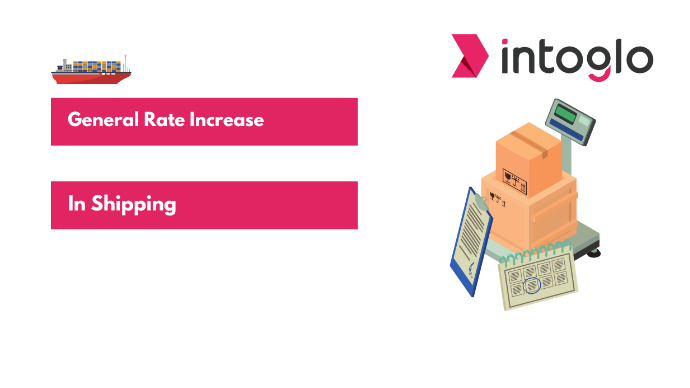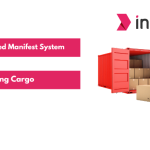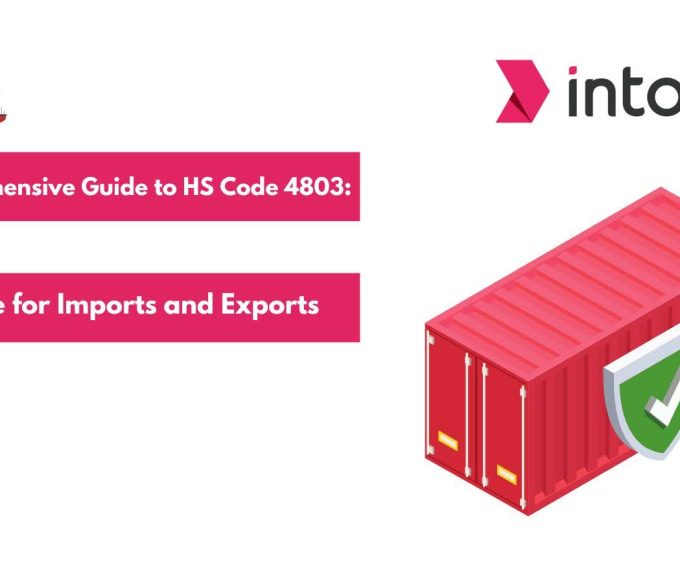Understanding General Rate Increases (GRI) in shipping is essential for managing costs and staying competitive in the global market. By grasping the actual expression of GRI, companies can better navigate the fluctuating shipping rates and drive accurate decisions that affect their bottom line.
Let’s understand GRI in shipping, an important factor that guides you towards cost-effective decisions.
What is a General Rate Increase in Shipping?
A General Rate Increase (GRI) is a shipping industry’s standard practice where carriers raise the base freight rates across specific trade routes. This adjustment typically occurs at regular intervals, aiming to ensure that shipping lines maintain profitability in response to certain factors, like fuel costs and fluctuating operational costs.
For example, shipping costs from Asia to the United States have surged in 2024. Carriers implemented a General Rate Increase (GRI) in July, raising prices by $500- $550 for 20-foot containers and $600-$700 for 40-foot containers.
Purpose and Necessity of General Rate Increase (GRI) in Shipping
The primary purpose of a General Rate Increase (GRI) is to offset the rising costs associated with the shipping industry, such as fuel prices, labor, equipment maintenance, and regulatory compliance. This adjustment ensures that carriers can maintain profitability and continue providing reliable services.
GRIs are essential for several reasons:
1. Cost Management: They help carriers manage significant operational expenses effectively.
2. Market Stability: Regular rate adjustments prevent drastic fluctuations in shipping costs, offering more predictable pricing.
3. Sustainable Operations: By ensuring financial stability, GRIs contribute to the long-term sustainability of shipping services, allowing carriers to invest in better infrastructure and improved services.
Factors Influencing General Rate Increases (GRIs)
Impact of Supply and Demand
Supply and demand dynamics play a crucial role in determining GRIs. When demand for shipping services exceeds supply, carriers have the leverage to implement higher rate increases. Conversely, when supply outstrips demand, carriers may be more conservative with GRIs to remain competitive. Seasonal variations, trade imbalances, and sudden spikes in shipping volumes, such as those during peak seasons or economic booms, can significantly impact these dynamics.
Operational Costs
Operational costs are a significant driver of GRIs. Key components include:
- Fuel: Fuel prices are highly volatile and represent a substantial portion of shipping expenses. Fluctuations in oil prices directly affect shipping costs, prompting carriers to adjust rates accordingly.
- Labor: Wages for crew members, dockworkers, and administrative staff contribute to overall expenses. Increases in labor costs due to wage hikes or labor shortages necessitate rate adjustments.
- Maintenance: The cost of maintaining and repairing vessels, as well as port and terminal equipment, is essential to ensure smooth operations. Rising maintenance costs influence the need for GRIs to cover these expenses.
Regulatory Compliance Costs
Shipping carriers must adhere to various international, national, and regional regulations, which often involve significant costs. These regulations can include environmental standards, safety protocols, and trade compliance requirements. For instance, stricter emissions regulations might necessitate investments in cleaner technologies or fuel, leading to increased operational costs that are offset through GRIs.
Market Conditions and Global Economic Changes
Global economic changes and market conditions have a profound impact on GRIs:
- Economic Growth or Recession: Economic cycles influence trade volumes. During periods of economic growth, increased trade activity can lead to higher shipping demand and, subsequently, higher GRIs. In contrast, during economic downturns, reduced trade activity can limit the scope for rate increases.
- Political Instability: Geopolitical tensions, trade wars, and sanctions can disrupt shipping routes and increase costs. Carriers may implement GRIs to mitigate the financial risks associated with these uncertainties.
- Currency Fluctuations: Variations in exchange rates affect the cost of goods and services involved in shipping operations. Carriers may adjust GRIs to account for unfavorable currency movements that impact their bottom line.
By considering these factors, shipping carriers can strategically implement GRIs to maintain profitability and ensure the sustainability of their operations in a constantly evolving global market.
The Impact of GRIs on Your Shipping Costs and Business
General Rate Increases can significantly elevate your shipping expenses. These increases typically range between 5% and 7% annually, affecting all shipping modes, including ground, air, and sea freight.
Effect on Business Operations
1. Budget Strain: Higher shipping rates can strain budgets, particularly for small and medium-sized businesses. Companies heavily reliant on shipping, like e-commerce and B2B businesses, might face substantial cost increases, potentially affecting profitability and pricing strategies.
2. Pricing Adjustments: Businesses may need to revise their product pricing to accommodate increased shipping costs, which can affect competitiveness. In some cases, absorbing the costs to retain customer loyalty might be necessary, but this can squeeze profit margins.
3. Supply Chain Efficiency: GRIs necessitate a reevaluation of supply chain strategies. Businesses may need to optimize shipment schedules, consolidate shipments, or renegotiate terms with carriers to mitigate cost impacts. Implementing flexible shipping dates and coordinating closely with suppliers can help avoid peak charges.
Strategic Responses to GRIs
1. Negotiation: Engage in strategic negotiations with carriers. Long-term contracts or high-volume shipments can often secure better rates, even during GRI periods. Building strong relationships with carriers can also yield preferential treatment and rate adjustments.
2. Diversification: Consider diversifying your logistics providers. Using a mix of regional carriers and specialized couriers can uncover competitive rates and services tailored to specific business needs, helping to offset the impacts of GRIs.
3. Planning and Forecasting: Anticipate GRIs by closely monitoring market trends and carrier announcements. This proactive approach allows you to adjust logistics strategies in advance, minimizing disruptions and cost increases.
4. Operational Adjustments: Optimize your packaging and shipping methods to reduce costs. For example, consolidating shipments, reducing package sizes, and exploring zone-skipping strategies can significantly cut down expenses.
By understanding and planning for GRI shipping, businesses can navigate these increases effectively, ensuring minimal disruption to operations and maintaining cost efficiency in their shipping processes.
Strategies to Minimize the Impact of General Rate Increases (GRIs)
Facing rising shipping costs due to General Rate Increases (GRIs) can feel daunting, but with the right strategies, you can navigate these challenges and keep your business afloat. Let’s deep dive into most effective strategies:
Strategic Negotiation
Work with specialized forwarders like Intoglo, who have contract rates with leading carriers. By engaging in long-term contracts or offering consistent high-volume shipments, you can negotiate better rates. Establishing strong relationships with carriers can lead to preferential rates and priority bookings. With Intoglo’s transparent pricing, you can easily see and compare rates, ensuring you get the best deal.
Contact Intoglo in advance to lock containers based on your shipping plan.
Flexible Shipping Dates
Adjust shipping schedules to avoid peak times when GRIs are likely to be implemented. By planning shipments before GRIs take effect, you can lock in lower rates.
Consolidation of Shipments
Combine multiple smaller shipments into larger ones to optimize space and reduce the frequency of shipments. This approach can help spread the cost over a larger volume, effectively lowering the per-unit shipping cost.
Diversification of Logistics Providers
Use a mix of regional carriers and specialized couriers to find more competitive rates. Diversifying your logistics providers can also offer additional value-added services that might not be available with major carriers.
Optimized Packaging
Reduce package sizes and weights to lower shipping costs. Efficient packaging can minimize the impact of weight-based and dimension-based rate increases.
Enhanced Supply Chain Visibility
Implement SKU analytics and supply chain visibility tools to identify inefficiencies. Adjust your inventory and shipping strategies based on data to reduce costs and improve operational efficiency. Plan your shipments in advance, as GRI announcements are typically made ahead of time, allowing you to avoid GRIs through strategic planning.
Forwarders like Intoglo can assist by suggesting the type of vessel you should take, ensuring you optimize your shipping plan effectively.
Understanding GRI vs. PSS
Here’s a comparison table outlining the main differences between GRI (General Rate Increase) and PSS (Peak Season Surcharge) in shipping:
| Aspect | GRI | PSS |
| Purpose | Increase base freight rates temporarily | Apply during peak shipping seasons |
| Timing | Applied anytime of the year | Applied during specific peak periods |
| Duration | Generally longer-term (months) | Short-term (weeks to months) |
| Application Frequency | Occasional, scheduled periodically | Annual or seasonal |
| Applicability | Applied across various trade routes | Targeted to specific trade routes or regions |
| Notification | Usually notified well in advance | Announced with shorter notice |
| Impact | Affects all shipments on designated routes | Limited to shipments during peak periods |
| Calculation Basis | Percentage increase on base rates | Fixed amount or percentage of freight rates |
| Purpose | Increase base freight rates temporarily | Apply during peak shipping seasons |
Conclusion
GRIs, though periodic and often announced in advance, can significantly impact shipping costs across various trade routes. By staying informed about these rate adjustments, businesses can better anticipate and mitigate their financial implications, ensuring smoother logistics operations. Considering Intoglo for your freight forwarding needs can provide clarity and expertise in managing GRIs and other shipping challenges. Contact today to optimize your shipping strategies and maintain cost efficiency in an evolving global market.









Leave a comment